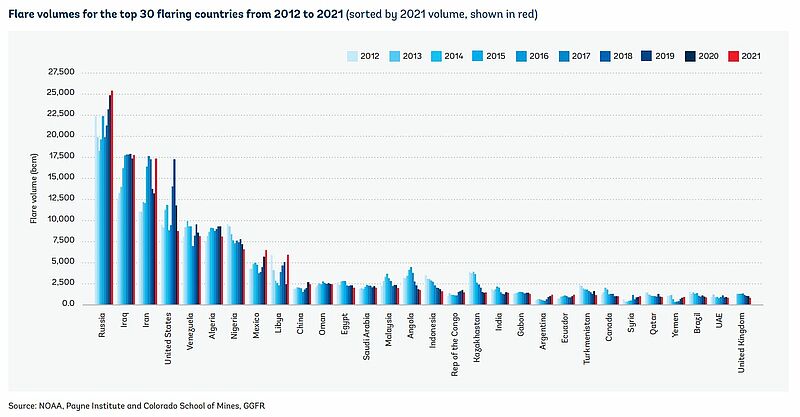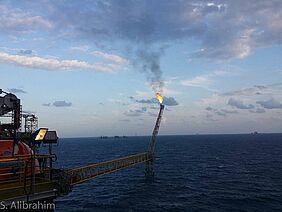In its latest report, the World Bank argues that progress in reducing harmful gas flaring has stalled over the past decade, which could lead to a failure in meeting the much needed targets for carbon dioxide emissions and the energy transition. One of the main reasons leading to the stagnation is the increase in liquids production by many of the major producers at a marginally lower flaring intensity. The energy sector must urgently address gas flaring, the World Bank warns, launching a new metric, the Imported Flare Gas (IFG) Index, that shows how countries importing crude oil are exposed to gas flaring.
During the last 10 years gas flaring volumes have remained largely static and global oil production levels rose slightly before dropping in 2020 due to the impacts of the Covid pandemic, averaging around 80 million barrels of oil per day. In 2021, about 144 billion cubic meters of gas were unnecessarily flared at oil and gas facilities around the world. Experts estimate that this resulted in approximately 400 million tons of carbon dioxide (CO2) equivalent emissions, of which 361 MMtCO2e was in the form of CO2 and 39 MMtCO2e was in the form of methane. 

According to satellite data, Russia, Iraq, Iran, the United States, Venezuela, Algeria, Nigeria Mexico, Libya, and China are the top 10 countries accounting for 75% of all gas flaring and 50% of global oil production in 2021. Seven of the top 10 flaring countries have held this position consistently for the last 10 years. While some progress has been made in several countries (e.g., the United States and Algeria) in reducing flaring, in some countries these gains have been reversed by dramatic increases (e.g., Iran and Mexico). 
Flaring occurs when companies burn the gas they produce along with the oil, rather than storing or using it. To get a better idea of the volume of flared gas in the world, it is only worth noting that it is greater than the volume of gas imported from Russia by the 27-member countries of the European Union. For this reason, by using gas that is currently flared, the world can not only address emissions, but also make significant progress in providing much-needed energy security, displacing dirtier fuels, and increasing access to energy in some of the world's poorest countries.
